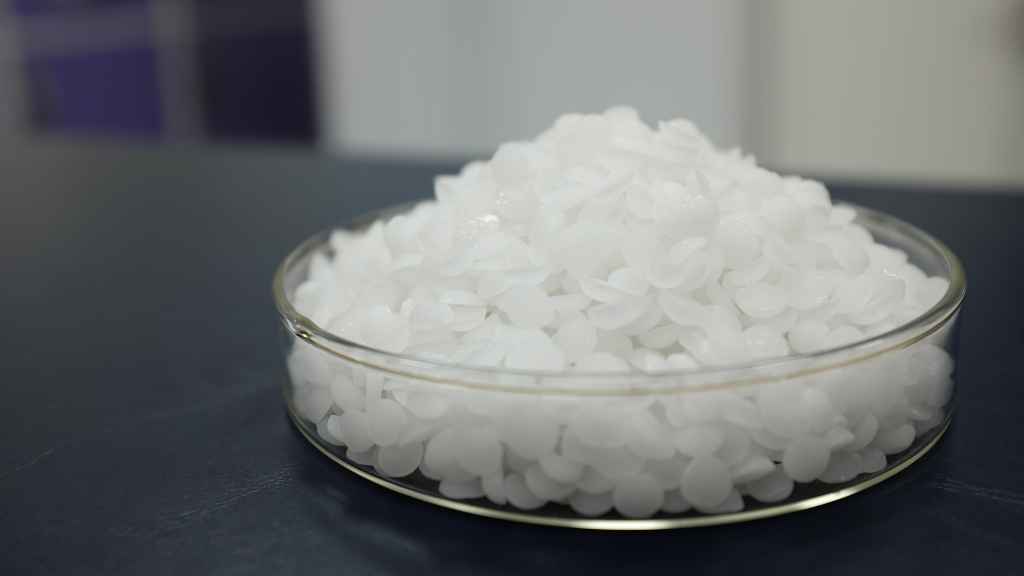Blog
Formula for Sodium Hydroxide: Understanding NaOH Composition
Sodium hydroxide, commonly known as lye or caustic soda, is a powerful compound with widespread use in various industries. The formula for sodium hydroxide is simple but essential for understanding its chemical structure and properties. This article will explore what sodium hydroxide is, its formula, how it is made, its uses, and safety considerations.
What is Sodium Hydroxide?
Sodium hydroxide (NaOH) is a highly corrosive and reactive base, meaning it can neutralize acids. It is widely used in industries such as manufacturing, cleaning, and chemical processing. Its caustic nature makes it a valuable component in products like detergents, paper, and even food processing.
The Chemical Formula for Sodium Hydroxide
The formula for sodium hydroxide is NaOH. Each molecule consists of one sodium atom (Na), one oxygen atom (O), and one hydrogen atom (H). This formula represents the structure of the compound and is a cornerstone in understanding its chemical reactions.
- Sodium (Na): A soft, highly reactive metal.
- Oxygen (O): A non-metal that forms oxides with many elements.
- Hydrogen (H): The lightest and most abundant element in the universe.
These three elements form a strong ionic bond, which makes sodium hydroxide highly soluble in water and a very effective base.
How Sodium Hydroxide is Made
The production of sodium hydroxide occurs mainly through the process of electrolysis. Electrolysis of sodium chloride (NaCl), or salt, in water results in the formation of sodium hydroxide, chlorine gas (Cl2), and hydrogen gas (H2). The process is as follows:

Electrolysis Process:
- Sodium chloride solution (brine) is electrolyzed.
- The electric current passes through the solution.
- Sodium hydroxide, chlorine gas, and hydrogen gas are produced as byproducts.
Why is the Formula for Sodium Hydroxide Important?
The formula for sodium hydroxide (NaOH) reveals how this compound reacts with other chemicals. For example, in water, NaOH dissociates into sodium ions (Na+) and hydroxide ions (OH-), which are responsible for its high alkalinity. Understanding this formula helps in predicting how NaOH will behave in various chemical reactions, particularly in neutralizing acids.
Common Uses of Sodium Hydroxide
Cleaning Agents and Soap Production
Sodium hydroxide is used extensively in cleaning agents due to its ability to break down grease and proteins. Its caustic properties make it a key ingredient in drain cleaners and heavy-duty detergents.
In soap production, sodium hydroxide reacts with fats in a process known as saponification, leading to the creation of soap and glycerin.
Paper and Pulp Industry
One of the most significant industrial uses of NaOH is in the paper and pulp industry. The formula for sodium hydroxide is essential here, as it helps in the breakdown of wood into pulp, which is then processed into paper.
Water Treatment
To adjust the pH of water and make it less acidic, people add sodium hydroxide. Adding NaOH neutralizes the water, prevents pipe corrosion, and ensures safer water quality.
Food Processing
Sodium hydroxide plays a role in food processing as well, which may sound surprising. It helps peel fruits and vegetables and contributes to the preparation of certain foods, such as pretzels, where it gives the dough its characteristic brown color.
Safety Considerations for Sodium Hydroxide
While the formula for sodium hydroxide (NaOH) provides significant benefits in industrial applications, it is also highly corrosive. This makes proper handling and safety measures essential when working with it.
Handling and Storage
- Wear Protective Gear: Gloves, goggles, and protective clothing are necessary to prevent skin and eye contact.
- Storage: Sodium hydroxide should be stored in airtight containers in a cool, dry place to prevent it from absorbing moisture from the air.
- First Aid: In case of skin contact, rinse immediately with plenty of water. Seek medical attention if needed.
Environmental Impact
Sodium hydroxide, if improperly disposed of, can harm aquatic life due to its high pH. Therefore, it is important to follow proper disposal guidelines to avoid environmental damage.
How Sodium Hydroxide Interacts with Other Chemicals
Understanding the formula for sodium hydroxide is crucial when considering its interactions with other substances. NaOH reacts vigorously with acids, producing salt and water. For instance:
Neutralization Reaction: NaOH + HCl → NaCl + H₂O
In this reaction, sodium hydroxide neutralizes hydrochloric acid, forming sodium chloride (table salt) and water. This is one of the many examples where the formula for sodium hydroxide plays a pivotal role in chemical reactions.
Conclusion: The Importance of the Formula for Sodium Hydroxide
The formula for sodium hydroxide (NaOH) is not just a set of symbols but a representation of a vital chemical compound with diverse applications. From industrial uses like soap and paper production to food processing and water treatment, sodium hydroxide plays an essential role in our everyday lives. Understanding its formula helps us appreciate the science behind its functionality.
